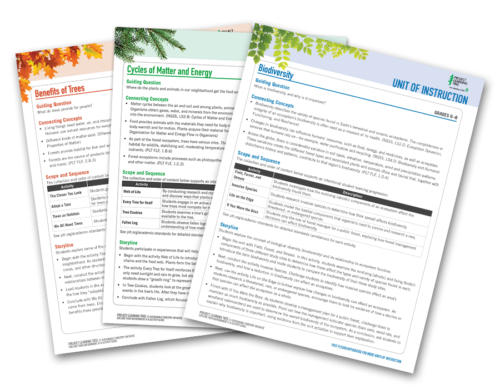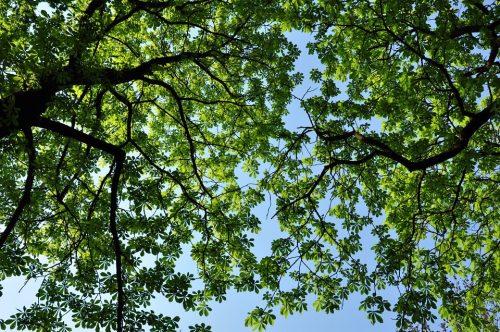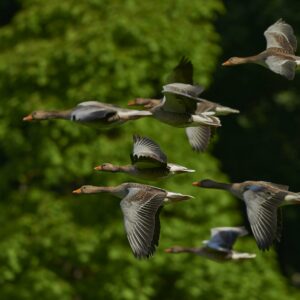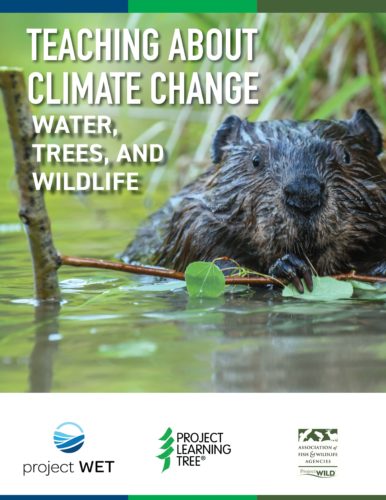Every month we carefully select additional resources and new support materials to enhance Project Learning Tree’s lessons. These environmental education resources include videos, educational apps and other interactive online tools, books and posters, teacher-generated materials, and more!
Be sure to check back regularly as we continue to add more “EE Resources”. You can also:
- Subscribe to our newsletter to get regular updates
- Register or log in to access all resources, including the student pages for each PLT activity.
For resources that specifically support remote learning, check out this collection COVID-19: Resources, Tips, and Support.
JUMP TO NEW RESOURCES!
Teaching about Climate Change with PLT, Project WET, and Project WILD
Project Learning Tree, Project WET, and Project WILD have updated our easy-reference resource that lists activities from each of our programs to help teach about climate science and the impacts of climate change.
Use our Teaching About Climate Change: Water, Trees and Wildlife PDF to help plan a lesson series that fits your setting and audience about the impacts of climate change on water, forests and biodiversity. Workshop facilitators for PLT, Project WET, and Project WILD can also use this resource to design climate-focused workshops. Learn more by watching this recorded webinar.
Trauma-Informed Approaches to Environmental Education
Oregon State University’s Trauma-Informed Toolkit, developed by Oregon PLT State Coordinator Yasmeen Hossain, supports and complements educators’ knowledge and skillset in implementing trauma-informed approaches in educational settings.
Online Support Materials for PLT’s Explore Your Environment: K-8 Activity Guide
PLT’s new Explore Your Environment: K-8 Activity Guide includes 50 field-tested, hands-on activities that integrate investigations of nature with science, math, English language arts, and social studies. Get a copy today by attending a local PLT professional development workshop, or you can purchase it directly on shop.plt.org, from Amazon, and other places where books are sold.
My K-8 Guide
 The new K-8 Guide is supported by a free online toolkit and resource hub found at plt.org/myk8guide.
The new K-8 Guide is supported by a free online toolkit and resource hub found at plt.org/myk8guide.
For each activity, you’ll find links to:
- Curated resources (see some examples below)
- Downloadable student pages
- Recommended reading
- Explicit connections to academic standards, including Next Generation Science Standards, and Common Core State Standards—English Language Arts and Common Core State Standards—Mathematics
Each activity provides students opportunities to explore the three dimensions of science: Science & Engineering Practices, Disciplinary Core Ideas, Crosscutting Concepts, and a Guiding Question to drive phenomenon-based, three-dimensional learning, which involves exploring the real world through learner-centered, multidisciplinary investigations that promote inquiry and problem solving.
Other resources at plt.org/myk8guide include:
- Planning an Investigation student page
- Assessment Rubric
- Tips for using Career Corners and Forest Facts
- An online Glossary
- 24 additional Units of Instruction
- And lots more!
Explore Your Environment: Spanish Student Pages & Complete Guide Now Available!
Thanks to our amazing partners in Mexico with the leadership of Cecilia Blackallar at the Proteccion de la Fauna Mexicana A.C., we have completed the translation of all Explore Your Environment Student Pages. They are available with your free PLT account. Login at plt.org/myk8guide
You can also purchase a digital copy of the Spanish version of the guide – Explora tu Ambiente: Guía de Actividades K-8!
New Resources
Did You Hear That?
 We are constantly bombarded by noise, from the ding of a text message and constant hum of computers to ambulance sirens and the sounds of planes overhead, that we don’t stop and listen, really listen, to the sounds of nature.
We are constantly bombarded by noise, from the ding of a text message and constant hum of computers to ambulance sirens and the sounds of planes overhead, that we don’t stop and listen, really listen, to the sounds of nature.
Have you ever wondered what nature and all its elements sound like? And we’re not just talking about the sounds of birds chirping, leaves rustling in the wind, or a babbling brook.
We often forget how impactful the sense of sound is because we live in such a visual world.
Together, the USDA Forest Service and The Nature of Cities produced an immersive sound experience called Reverberations. Organized by elements—air, water, earth, and fire—the Reverberations exhibit explores sounds such as the acoustic ecology of bark beetles or what sounds you’ll hear in an urban forest. Listen to the crackling of pine needles on fire or bat echolocation.
Enhance your PLT lessons with these auditory pieces and invite learners to close their eyes and simply listen.
Activities for Early Childhood
Pair these activities from Trees & Me: Activities for Exploring Nature with Young Children with some of the incredible pieces from Reverberations.
- Sounds Around activity – From the “Earth” section of Reverberations, play the Birdsongs of the Seal River Watershed so little learners can listen to the various calls of birds and even a pair of wolves.
- Evergreens in Winter activity – Also from the “Earth” section, check out the Underground Sound Project. Visit artist Nikki Lindt’s website and listen to the “Precipitation 4” audio to hear what snow sounds like above and below the surface!
Activities for Elementary & Middle School
Pair these activities from Explore Your Environment: K-8 Activity Guide / Explora tu Ambiente: Guía de Actividades K-8 with audio from Reverberations.
- Trees in Trouble / Árboles en Problemas activity – In this activity, learners examine trees for signs of poor health or damage and try to identify potential causes. Pair this lesson with the Acoustic Ecology of Bark Beetles from the “Earth” section.
- Invasive Species / Especies Invasoras activity – From the “Earth” section of Reverberations, watch the Cutting Down Mugwort video that highlights the work done to clean up a once toxic wasteland in Brooklyn, New York, that has since been reforested. Staff and volunteers removed invasive species to make room for native plants to thrive.
- The Global Climate / El Clima Global activity – Check out Water Rhythms: Listening to Climate Change from the “Water” section of Reverberations. While the focus in this activity is on carbon dioxide in the atmosphere, the audio lets learners understand how climate change is affecting water.
- Nothing Succeeds Like Succession activity – Pair this lesson with the Soundscapes of Socioecological Succession audio that you can find in the “Fire” section.
Exploring nature through the senses, like sound, allows learners to fully engage and focus on what they’re learning.
 Birds Take Flight
Birds Take Flight
Did you know World Migratory Bird Day happens twice a year? For the US and Canada, it’s celebrated in May, and for Mexico, Central and South America, and the Caribbean it falls in October. Introduce your learners to the wonderful world of birds through PLT’s activity collection, Together for Birds, and pair activities with these videos from PBS.
- Celebrate Urban Birds
- Cornell Bird Cams Lab
- A Nest Made Out of Mud
- Behavioral Adaptations: The Gray Jay
- Hummingbirds and Hawks: An Unlikely Pair
Celebrate Bat Week | October 24-31
Bats often get a bad rap, but these small, but mighty, pollinators are vital to the health of our planet. Each year, Bat Conservation International hosts Bat Week, to celebrate the role bats play in the environment. Check out these fun, hands-on activities to do with your learners during the week of October 24-31!


